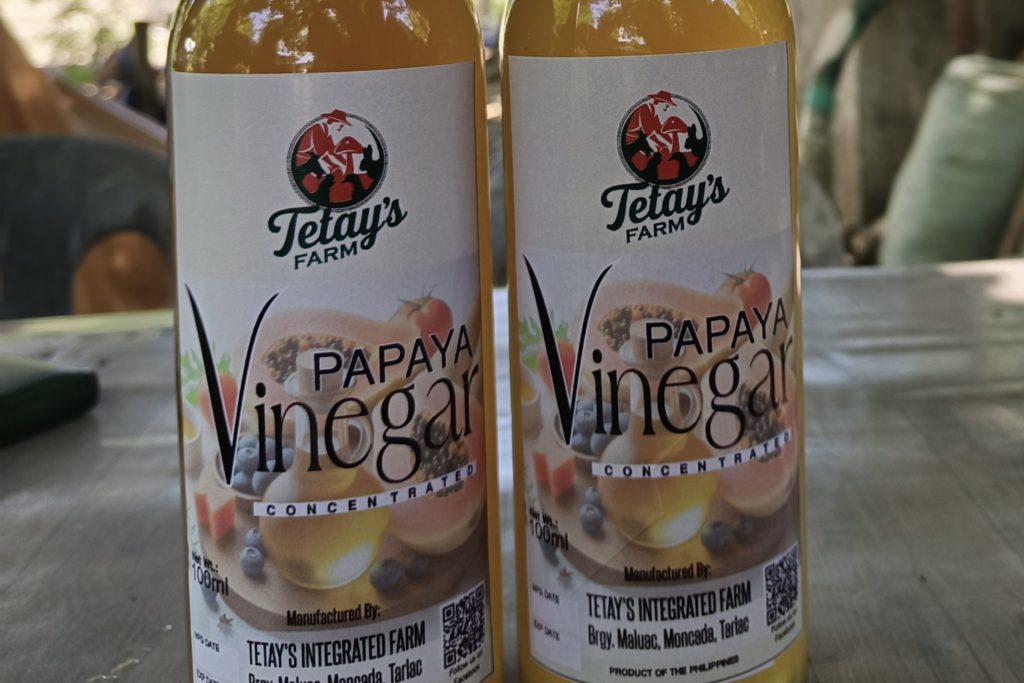
Long before scientific studies praised the health benefits of probiotics, Filipinos were already fermenting—quietly, masterfully, and with heart.
Across Central Luzon, fermentation has long been part of everyday life. From rice-fish concoctions passed down through generations to experimental fruit wines, these time-tested methods are now finding new purpose—not just in kitchens, but in communities building sustainable livelihoods.
These hidden treasures are now being documented and supported through initiatives like the Grassroots Innovation for Inclusive Development (GRIND) program of the Department of Science and Technology (DOST) Region 3.
What was once homemade and homespun is now being elevated—through science, local collaboration, and cultural resilience—into products of pride and possibility.
Sustaining culture through burong isda and women’s empowerment
In Pampanga and Nueva Ecija, fermentation takes the shape of Burong Isda—a tart, pungent blend of rice and fish often paired with vegetables and fried fare. But this dish is more than just food; it’s cultural memory preserved in every jar.
Leticia Mallari and Lucena Genetiano, members of the Hope Rural Improvement Club in Sto. Domingo, Nueva Ecija, have their own spin on the classic.
Mallari uses angkak for a vibrant red hue, while Genetiano favors ginger for a cleaner taste. Yet both hold fast to a peculiar belief passed down by their elders: “No one should watch while you’re making buro, or it won’t turn out right.”
Behind this superstition lies wisdom—fermentation is delicate, requiring time, patience, and a kind of silent reverence.
“Through the GRIND Program, Central Luzon will make its mark by championing fermentation — a proud blend of culture, tradition, and innovation,” DOST Regional Director Julius Caesar Sicat said.
For women like Mallari and Genetiano, this support means their traditions can now offer economic empowerment, not just nourishment.
Turning local harvests into innovative products

In Tarlac, a surplus of sweet potatoes didn’t go to waste—it became Don Benito’s Sweet Potato Wine, a unique product created by BUSILAK-RIC, a women’s group from Moncada.
Supported by the local government and DOST, the group has since expanded into chips, buchi, and more.
Meanwhile, innovators like Cristy Vallejos have taken common fruits like papaya and transformed them into vinegar, balancing sweetness and acidity through careful fermentation.
In Camiling, Eleanor Gabuyo does the same with mangoes, showing that even kitchen scraps can become artisanal goods.
Over in Aurora, traditional products like Roselle Wine, sukang tuba infused with spices, and Kamias preserves reflect both creativity and conservation.
“The GRIND program will empower Aurora’s local enterprises by harnessing fermentation science to transform traditional practices into innovative, value-added products,” DOST Provincial Science and Technology Director and GRIND Project Leader Maricel Sicat said.
She added that they are building a platform that allows grassroots innovators to access science and technology interventions, helping them elevate their ideas into viable solutions and, in turn, create livelihood opportunities while empowering communities from the ground up.
Building coastal livelihoods with traditional fermentation
Fermentation isn’t just landlocked. Along the coastal barangays of Malolos, Bulacan, Norberto Ramos crafts heko, a savory paste made from shrimp residue—an ingenious way to reduce waste and retain flavor.
In Bulakan, Elizabeth Salvador pickles dampalit, a wild herb, offering a seaside twist to the familiar atchara.
Even cacao undergoes fermentation. In Samal, Bataan, Minila Wanger carefully ferments beans before turning them into rich chocolate—a tradition that could easily disappear. “Who will continue this?” she asks, reflecting the quiet concern of many rural artisans.
This is where DOST’s vision shines. “It is about reaching out to our innovators—the farmers with clever solutions, the artisans with unique crafts, the everyday individuals with brilliant ideas to make life better,” GRIND Project Technical Assistant Alyha Kaye Marcelo explained.
She added that they are helping innovators take their innovations — those sparks of genius — and bring them into the mainstream.
Fermentation, once a necessity, is now a form of innovation. What was once passed down in whispers is now being bottled, branded, and brought to market—not to erase tradition, but to honor it with purpose.
Across Central Luzon, the jars of buro, bottles of vinegar, and flasks of wine are no longer just symbols of the past. They are markers of resilience and renewal, bridging generations and geographies.
And in every community touched by the GRIND program, fermentation isn’t just preserving food. It’s preserving identity, crafting futures, and reminding the world that sometimes, the best innovations begin at home. (CLJD/RPQ, PIA Region 3-Bataan)




